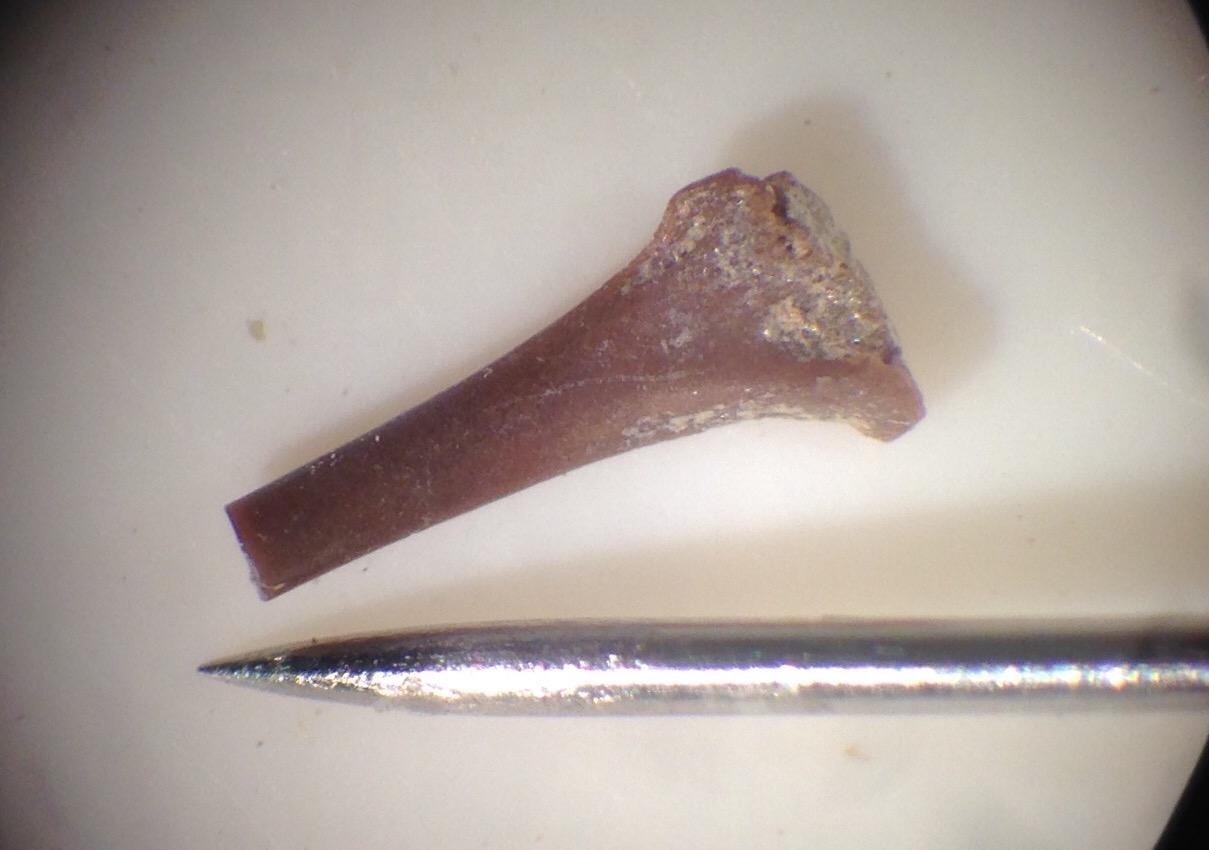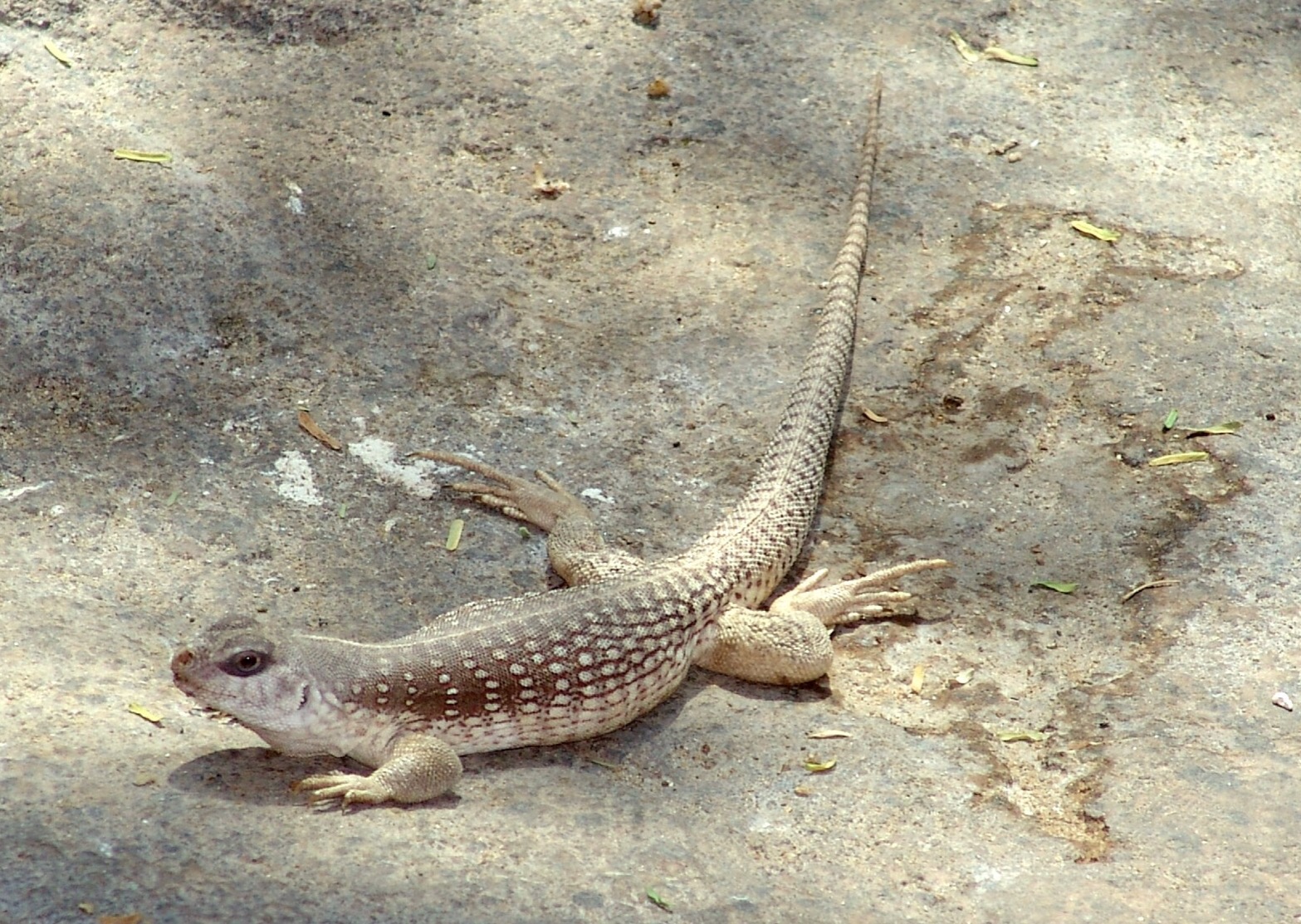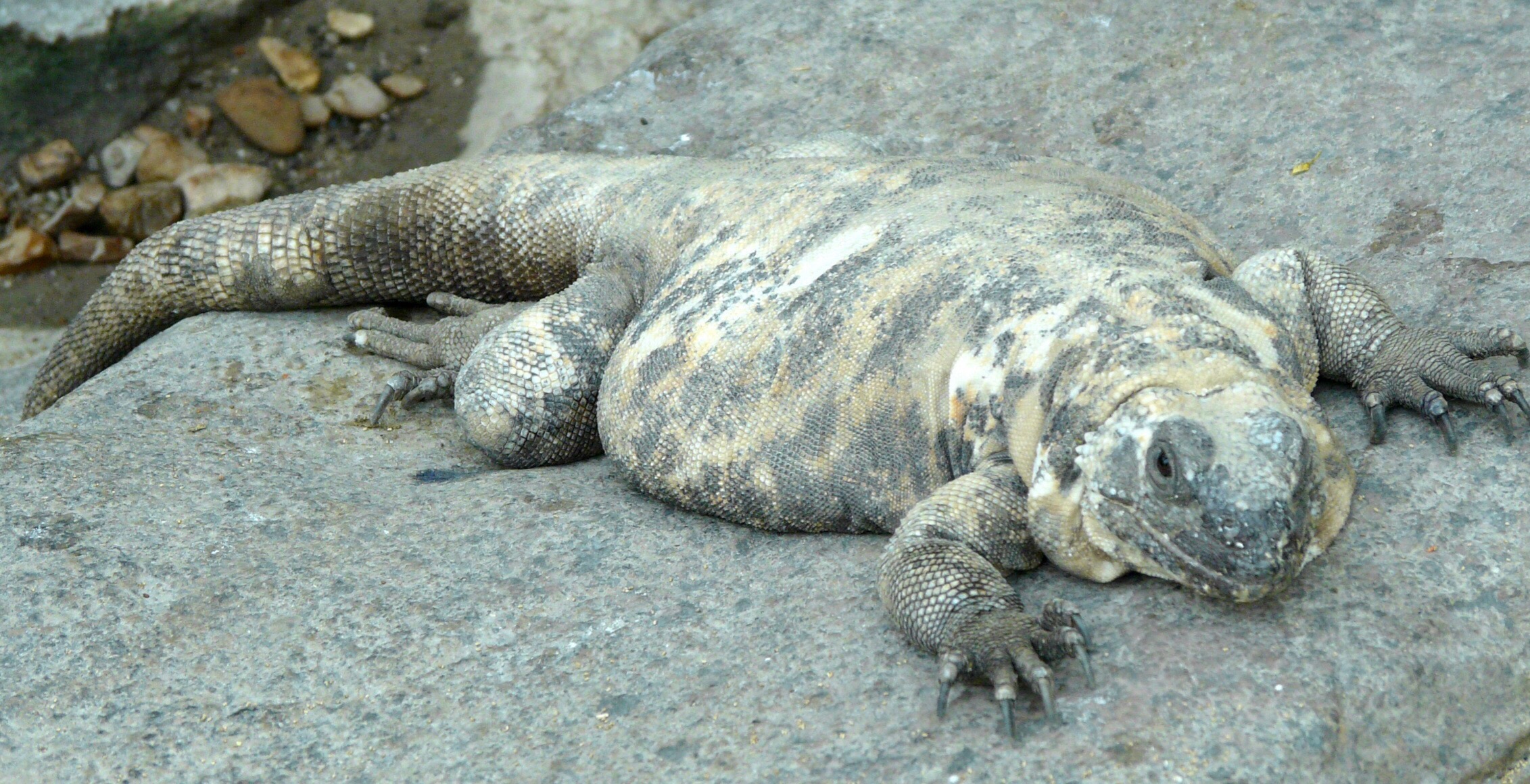 In terms of numbers, most of the Pleistocene fossils from Diamond Valley Lake are from small animals, especially rodents and other small mammals. But there are non-mammals represented as well, such as the rattlesnake I posted a few weeks ago, and today's example, a lizard.This specimen is the proximal part of the left humerus, the upper arm bone. It has been identified as coming from the Family Iguanidae. The most famous iguanid is Iguana itself, but the family is fairly diverse with a number of different genera. Two species still live in Southern California, the desert iguana Dipsosaurus dorsalis:
In terms of numbers, most of the Pleistocene fossils from Diamond Valley Lake are from small animals, especially rodents and other small mammals. But there are non-mammals represented as well, such as the rattlesnake I posted a few weeks ago, and today's example, a lizard.This specimen is the proximal part of the left humerus, the upper arm bone. It has been identified as coming from the Family Iguanidae. The most famous iguanid is Iguana itself, but the family is fairly diverse with a number of different genera. Two species still live in Southern California, the desert iguana Dipsosaurus dorsalis: ... and the common chuckwalla Sauromalus ater:
... and the common chuckwalla Sauromalus ater: There is also an extinct iguana from Riverside County, Pumila novaceki, that has been found in somewhat older sediments than those found at Diamond Valley Lake. This humerus could have come from any of these small iguanids.
There is also an extinct iguana from Riverside County, Pumila novaceki, that has been found in somewhat older sediments than those found at Diamond Valley Lake. This humerus could have come from any of these small iguanids.
